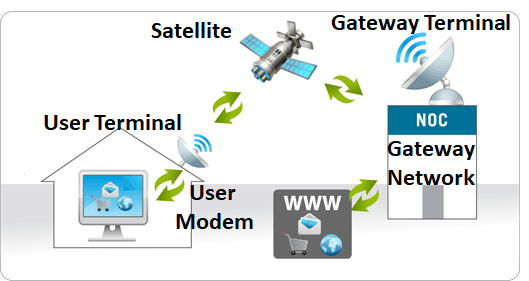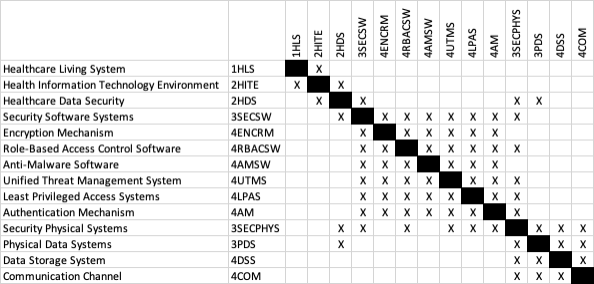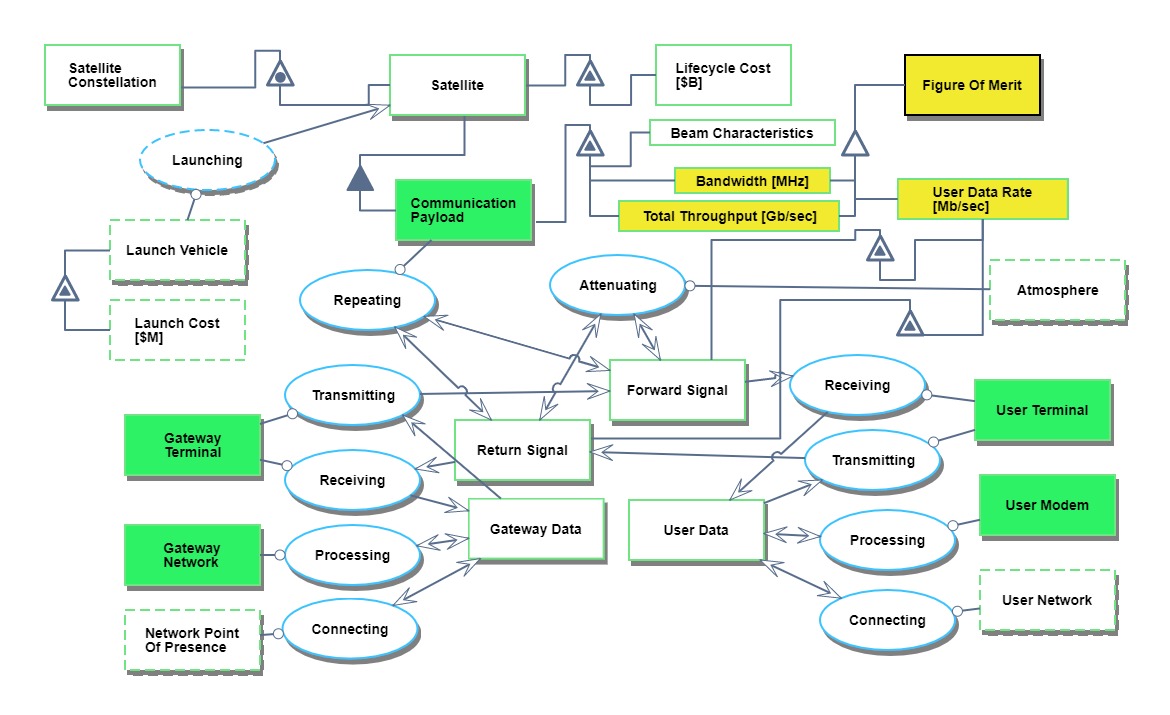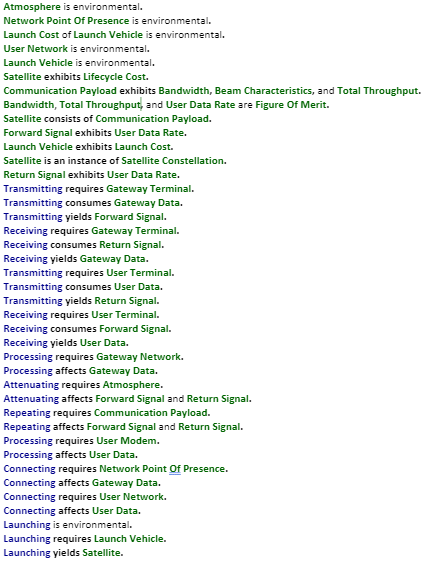Satellite Data Communication
Technology Roadmap Sections and Deliverables
The first point is that each technology roadmap should have a clear and unique identifier:
- 2SEA - Solar Electric Aircraft
This indicates that we are dealing with a “level 2” roadmap at the product level (see Fig. 8-5), where “level 1” would indicate a market level roadmap and “level 3” or “level 4” would indicate an individual technology roadmap.
Roadmap Overview
The working principle and architecture of satellite data communication is depicted in the below.
Satellite-based internet/voice access is enabled by satellites, which provide relay to extend communication beyond traditional (terrestrial) line of site of the network and users. Data encoded in radio waves is sent between the ground station’s transceiver, relayed via the satellite, and the modem at the user’s location. Advances in technology include High Throughput Satellites (HTS) and some next-generation satellite systems may follow low-earth orbit rather than geosynchronous orbits, which would reduce latency dramatically.
Design Structure Matrix (DSM) Allocation
The 2-SEA tree that we can extract from the DSM above shows us that the Solar-Electric Aircraft (2SEA) is part of a larger company-wide initiative on electrification of flight (1ELE), and that it requires the following key enabling technologies at the subsystem level: 3CFP Carbon Fiber Polymers, 3HEP Hybrid Electric Propulsion and 3EPS Non-Propulsive Energy Management (e.g. this includes the management of the charge-discharge cycle of the batteries during the day-night cycle). In turn these require enabling technologies at level 4, the technology component level: 4CMP components made from CFRP (spars, wing box, fairings …), 4EMT electric machines (motors and generators), 4ENS energy sources (such as thin film photovoltaics bonded to flight surfaces) and 4STO (energy storage in the form of lithium-type batteries).
Roadmap Model using OPM
We provide an Object-Process-Diagram (OPD) of the Satellite Data Communication (2SDC) roadmap in the figure below. This diagram captures the main object of the roadmap, its decomposition into systems (gateway, satellite, user terminal, etc.), its characterization by Figures of Merit (FOMs) as well as the main processes (Transmitting, Receiving).
An Object-Process-Language (OPL) description of the roadmap scope is auto-generated and given below. It reflects the same content as the previous figure, but in a formal natural language.
Figures of Merit
The table below show a list of FOMs by which solar electric aircraft can be assessed. The first four (shown in bold) are used to assess the aircraft itself. They are very similar to the FOMs that are used to compare traditional aircraft which are propelled by fossil fuels, the big difference being that 2SEA is essentially emissions free during flight operations. The other rows represent subordinated FOMs which impact the performance and cost of solar electric aircraft but are provided as outputs (primary FOMs) from lower level roadmaps at level 3 or level 4, see the DSM above.
| Figure of merit | Units | Description |
|---|---|---|
| Throughput capacity | [Gb/s] | Rate at which the satellite can successfully deliver data to all end users |
| Latency | [s] | Amount of time needed to deliver data between the communication endpoints. Unless otherwise stated, we assume this to mean one-way latency between satellite and ground. |
| Per-user downlink rate | [Gb/s] | Downlink data rate as experienced by an individual user subscribed to the service. |
Besides defining what the FOMs are, this section of the roadmap should also contain the FOM trends over time dFOM/dt as well as some of the key governing equations that underpin the technology. These governing equations can be derived from physics (or chemistry, biology ..) or they can be empirically derived from a multivariate regression model. The table below shows an example of a key governing equation governing (solar-) electric aircraft.
| Inputs | Key relationship or governing equation | Outputs |
|---|---|---|
| Signal-to-noise ratio | Shannon-Hartley theorem: <math>C = B \log_2 \left( 1+\frac{S}{N} \right) </math> |
Throughput capacity |
| Bandwidth | ||
| Orbital distance | <math>t = d/c</math> | Latency |



